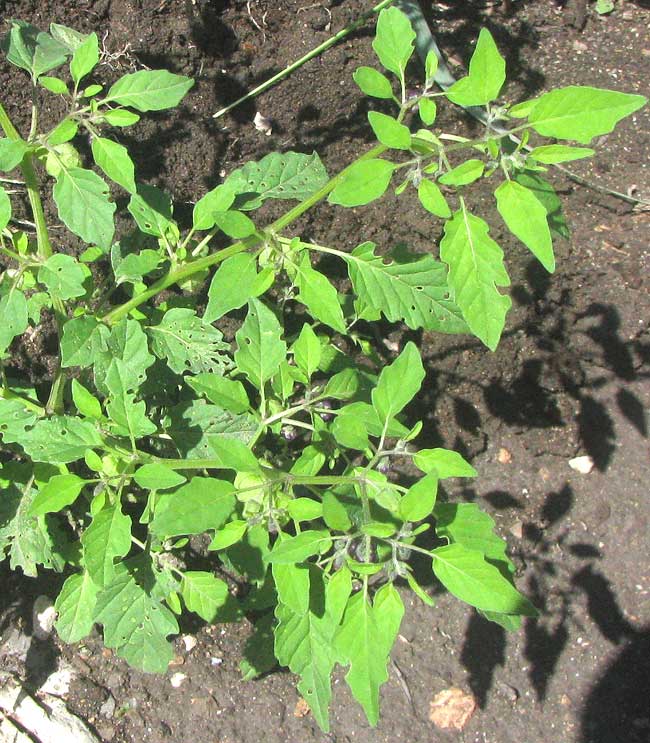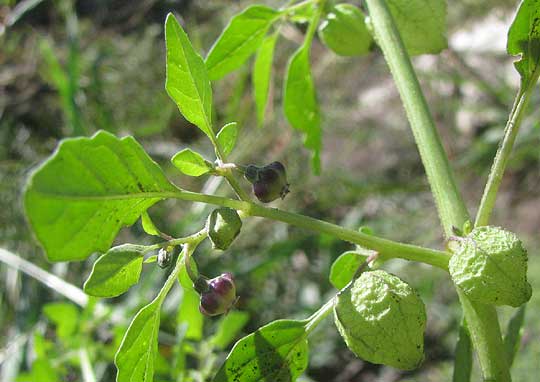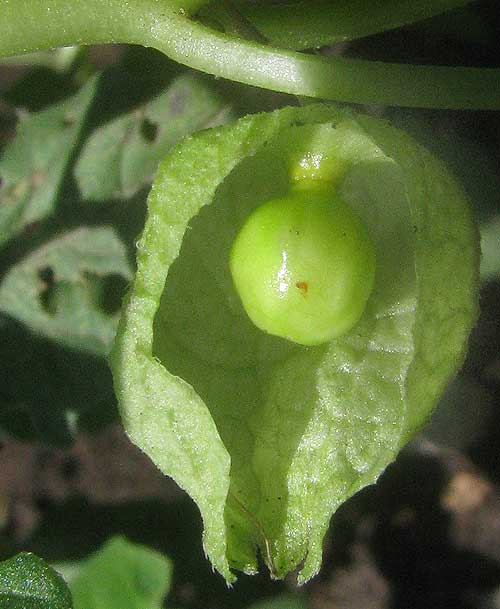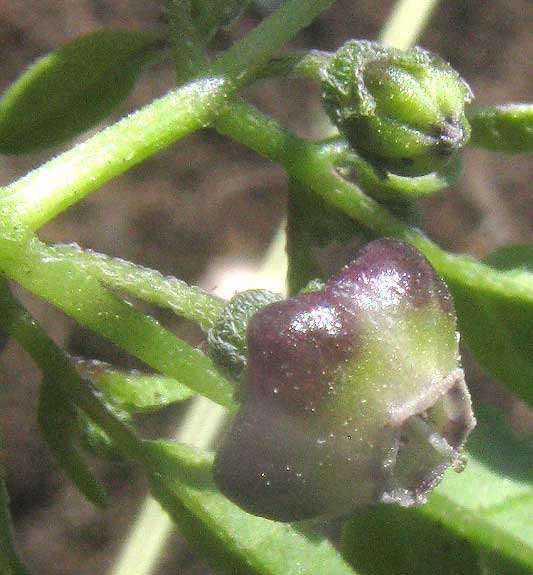Excerpts from Jim Conrad's
Naturalist Newsletter

from the September 29, 2013 Newsletter issued from the Frio Canyon Nature Education Center in the valley of the Dry Frio River in northern Uvalde County, southwestern Texas, on the southern border of the Edwards Plateau; elevation ~1750m (~5750 ft); N29.62°, W99.86°; USA
GLOBECHERRY
In the garden a certain plant gave the impression of being a member of the Black Nightshade/Tomato/Potato Family, the Solanaceae, because of its simple, somewhat thin leaves on slender petioles, and irregularly wavy blade margins. At first I thought it might be one of the black nightshades. That's the plant above.
However, on hands and knees I saw that the fruits weren't at all like the miniature tomatoes produced by black nightshades, but rather were inflated bladders, as shown below:

Tearing away one side of a bladder, a little "tomato" was exposed, shown below:

Maybe you know the Mexican plant called Tomatillo, which produces sweet, firm, green tomato-type fruits surrounded by bladdery husks like those in the picture. Tomatillo fruits are much used in salsas. If you know the wildflowers called ground cherries, they also bear similar bladder-surrounded tomatoes. Both ground cherries and tomatillos are members of the genus Physallis in the Nightshade Family.
So, the fruits of our garden species are typical of those produced in the genus Physallis . However, the flowers of Physallis species usually are thumbnail size, yellow and with "rotate" corollas like wide-brimmed sunhats. Our plant doesn't bear such blossoms. Our plant's flowers are much smaller than any Physallis flower I've seen -- about 1/8th inch (4mm) -- and they're structured very different. Below, you can see one, shaped more or less like a blueberry flower:

Our garden plant is MARGARANTHUS SOLANACEOUS*, identified in books as Netted Globecherry, occurring in the southern parts of Texas, New Mexico and Arizona south through much of Mexico, with outlying populations in Cuba, Curaçao, Costa Rica and Honduras. It's such a peculiar plant that it's the only species in the genus Margaranthus.
Physallis fruits are often edible and good tasting, but black nightshades are poisonous. I find no reference to anyone eating fruits of Margarathus, and I, mindful of how certain members of the Nightshade Family can kill you, am not going to test them.